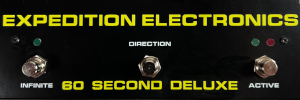Showing posts sorted by relevance for query Variable Oscillations. Sort by date Show all posts
Showing posts sorted by relevance for query Variable Oscillations. Sort by date Show all posts
Tuesday, November 05, 2019
Variable Oscillations SNID Synthesizer
Published on Nov 5, 2019 Variable Oscillations
First synth small batch!
More to come
About : 300$
7 units available
Comes with carrying bag, mini patch cables, manual/poster and other electronic components for patch bay.
3.5mm Audio out
CV Gate in/out 0-5V+
5V Micro USB power
Any questions please contact us through Gmail variable.oscillations@gmail.com. we are just in the process of setting up Etsy
First run of this synth, small-batch! More to come! ;)
User guide sheet with specs below.
Friday, May 06, 2016
New Folktek Conduit Eurorack Module
Published on May 6, 2016 Sir Folktek
Playlist:
Folktek Conduit eurorack module (video1)
"Conduit working with Folktek's Matter. Simple sequence via Octone, triggering via Varigate4. Processing two of the three Conduit signal paths toward the end. Utilizing the Folktek 'Resist' module for Matter triggering as well as Conduit oscillation."
Folktek Conduit eurorack module (video2)
"Conduit working with Folktek's Matter. Simple sequence via Octone, triggering via Varigate4. Utilizing the Folktek 'Resist' module for Matter triggering as well as Conduit oscillation."
Folktek Conduit eurorack module (video3)
"Conduit working with Folktek's Matter. Simple sequence via Octone, triggering via Varigate4. Utilizing the Folktek 'Resist' module for Matter triggering as well as Conduit oscillation.
Folktek Conduit eurorack module (video4)
"Conduit getting random. Single oscillation processing with Folktek's Matter. Some random LFO stuff. Processing with a light amount of reverb. Utilizing the Folktek 'Resist' module for Conduit oscillation."
Conduit was also released as a desktop synth. You can filter through previous posts here for more info and demos.
via Folktek
"*note that due to an error in manufacturing, the mounting holes have had to be routed - the oblong holes are slightly longer than standard.
Conduit is a delay, filter, and 9 point harmonic oscillation module which creates three independent signal paths that can be inter-mixed how you like. It's also capable of jumping directly into the circuitry of Matter for processing. The root circuitry is based on the conduit desktop piece which is no longer in production.
Delay
At it's root Conduit is a delay with a warm, analog sound which is clean at tight times and tending toward something disgusting and noisy and slower times. External audio or internal oscillation can be processed by the delay. When multiple oscillation points are mixed, the delay feedback gets distorted and noisy. As a delay it serves best as a source of texture.
Filter
The Delay travels into a state-variable filter with fixed resonance. A clean signal passing by the delay will still be filtered. The filter has a vactrol-based cv in to control the cutoff. So this filter receiving voltage control is very wormy in nature. It's best to multiply and mix a signal going into Conduit if it's to be used for processing - giving you the filtered and unfiltered version.
Oscillation
The purpose of this module is not simply as a delay or a filter - these are just components to a greater whole. With Conduit, aspects of the giant delay IC processing are accessed as a series of sound sources - harmonic oscillations based on the clocking of the delay. Therefore, delay time is the same as master pitch for these oscillations (also represented by "time cv"). There are a total of 8 harmonic oscillations and one noise source. All 9 points representing audio level harmonic oscillations are represented by a 9x4 female header so that each of these points or multiple points can be used as a sound source. Using Resist alongside allows one to control the level of the oscillation.
Saturday, November 07, 2020
Sinusoidal Numeric Incremental Device - SNIDxs - Test Patches
Variable Oscillations
"The Sinusoidal Numeric Incremental Device in a concentrated form. Testing out oscillator sync and amplitude modulation from the clock divider pulse outputs" followed by "Modulating amplitudes with the revolutionary technology of resistive finger patch cables."
See the Variable Oscillations label for more.
LABELS/MORE:
New,
New in 2020,
New Sound Machines,
New Sound Machines in 2020,
News,
Variable Oscillations
Saturday, November 09, 2019
Thursday, September 16, 2010
BugBrand Modular 1Frame System with External Joystick Controller

via this auction
"Finally! After 5 years in the dark dungeon that has been the BugBrand Workshop I have just moved to a better place! Over that time I have picked up quite a stack of bits'n'pieces and it is really time to have a serious clear-out -> to clear space, to pass on unused items and to generate some funds for setting up the new workshop.
BugBrand Modular - 1Frame System with external controller
This is quite special! A complete BugBrand Modular setup in a desktop enclosure, made up of a good selection of modules which are mainly early/prototype ones but brought fully up to current spec. For more details on the BugBrand Modular and the different modules do have a check of the BugBrand Modular website, but I will give an overview of everything here. As you may be aware, I've been making the BugBrand Modular Systems available over the last two years, but because I'm only a small setup I've restricted myself to working with only a handful of people. Usually I build up systems with people over a number of months, but here is a chance to get a full compact system with a unique controller!
The Modules:
Monday, May 02, 2016
Whimsical Raps JUST FRIENDS: An Introduction
Published on May 2, 2016
"'JUST FRIENDS' a Mannequins module by Whimsical Raps.
Envelopes / Cycles / Oscillations / Impulses"
via Whimsical Raps
"JUST FRIENDS
MANIFOLD GENERATORS FOR NAVIGATING SOCIAL CONTOURS
Just Friends discussing the many facets of their empathic geometry. In generating manifold envelopes, projecting impulses, cycling on parallel gradients. Together navigate the sixth nexus into your own personal patch communion.
Six vectors in similar shapes, asymmetrically skewed by RAMP. Once linear trajectories soften to sines with CURVE, or bend through exponentials, trapezoids, to variably widthed pulses. All members are temporally based by TIME as they slow from taut snaps to oceanic undulations, with tempic relationships constructed from INTONEs integer fractions. MODE employs the west-coast archetypes to all, while separate TRIGGERS and outs promote rhythmic independence. The complex MIX output twists on tradition for rippling semi-cyclic topographies.
Shifting into Sound, accelerates to a fleet of oscillators or Mangrove-styled impulse generators. TIME becomes pitch, while INTONE defines a harmonic argument, pivoting utone through otone. TRIGGER normalization allows for collective sets, with unjust chords combined in a final MIX. Through-zero FM embodies collective contortions in two timbres of depth or discernment.
Explore interpersonal dynamics with RUN. Define retrigger sensitivity for variable tempo and frequency division of shapes and sounds. A level of sustenance adds an additional stage of decay, or cook up pseudosequences with self-modifying burst generation. Discover attunement for and within harmonic pings of variable timebase, then engage complete polysyntheticism with Just Type."
Monday, January 28, 2013
NAMM 2013: Metasonix-S-2000 Vacuum-Tube Synthesizer
Note: links to listings are affiliate links for which the site may be compensated.
via this auction
 "Up for Buy It Now is the New Metasonix-S-2000 Vacuum-Tube Synthesizer. One Picture taken at the 2013 NAMM Show, others added 1/26/13!
"Up for Buy It Now is the New Metasonix-S-2000 Vacuum-Tube Synthesizer. One Picture taken at the 2013 NAMM Show, others added 1/26/13!
I played it a the NAMM show and was impressed by it's user friendly design. It's a very dynamic sounding synth. Totally unique in a world of synths. You will be amazed at it's sound!
Metasonix took 20+ years of experience in vacuum-tube electronic music, and used it to make the most exciting instrument in the history of Metasonix. The S-2000 is not merely a new repackaging of old designs. It is a revolution, and a game changer.
 The S-2000 was made to be as easy to use as possible. Just plug in power, plug in an amplifire, wait 30 seconds for the real new-old stock vacuum tubes to warm up, and start playing it. The built-in 400mm ribbon controller is instantly responsive, and needs no special treatment. No trimpots, no fiddling with MIDI interfaces or fighting with fistfuls of cables. The miseryhas been engineered out.
The S-2000 was made to be as easy to use as possible. Just plug in power, plug in an amplifire, wait 30 seconds for the real new-old stock vacuum tubes to warm up, and start playing it. The built-in 400mm ribbon controller is instantly responsive, and needs no special treatment. No trimpots, no fiddling with MIDI interfaces or fighting with fistfuls of cables. The miseryhas been engineered out.
The simplicity might fool you. The S-2000 has enough controls and enough flexibility to keep the musician busy for years of sonic exploration.
The S-2000 contains:
Two all-tube oscillator/filter "Operators", with resonance variable from flat responce to deep oscillations. Waveshape is variable from clean sine wave to a distinctive distorted square/pulse wave. Resonate both for FM sound effects.
An all tube VCA (Voltage Controlled Amplifier)
Three Contour Generators:
C1 Attack-Release types feeds the VCA
C2 Attack-Decay type feeds the "Operator" 2 Sweep and optionally the VCA, and may be set to retrigger automatically.
C3 is the same as C2, but feeds the "Operator" 1 CV Input.
Plus a built-in and highly-sensitive ribbon controller, which triggers C1-C3 when the Ribbon is touched. Two Modes are available, continuous open for pitch bending (Theremin Style), and single-touch for discrete held pitches. The Ribbon gives more than 3 octaves of pitch range.
By setting the the two "Operators" properly, it's possible to get a range of classic synthesizers sounds. By setting them a little differently, you get sounds no one has ever heard before.
The S-2000 is made for use anywhere. It weighs only 1.25 kg (less than 3 pounds). Use it stand alone, or mount in a standard 19" EIA Rack. (It is 3U high but only protrudes 1 inch, or 25 mm behind the panel). It runs from a standard 12v DC adapter (one is included that can work on any mains power source on earth.
It's built like a proverbial tank. The front panel is a massive anodized aluminum slab with legends deeply engraved and paint-filled, and the electronics are protected by a tough, fully shielded steel enclosure with nearly indestructible powere coat. The tubes are very commonplace types, easily available from any vacuum-tube distributor. Metasonix offers a full set of replacement tubes, pretested and known good, via it's distributors, at a very reasonable extra charge.
The Input connection for the SpectraSymbol Ribon is accessible, so that any size SpectraSymbol ribbon controller may be plugged in and used - right up to their 1-Meter length. Need more resolution? No problem.
External Inputs and Outputs are available. CV and Gate Outputs from the Ribbon are accessible from the front-panel jacks at all times. The CV-Gate Inputs can be used by switching the CV/Gate selector switch (CV can be varied from 1.5v to 7v for more than 3 octaves of range, tunable with the front-panel tuning knobs) The audio input feeds into "Operator 1, so that both "Operators" can be used as Bandpass Filters in Series. The S-2000 is hand-made in California, by real people.
So: Purchase with cconfidence. And play with confidence. Because you're playing at the leading edge with the New Metasonix-S-2000 Vacuum-Tube Synthesizer. "
via this auction
 "Up for Buy It Now is the New Metasonix-S-2000 Vacuum-Tube Synthesizer. One Picture taken at the 2013 NAMM Show, others added 1/26/13!
"Up for Buy It Now is the New Metasonix-S-2000 Vacuum-Tube Synthesizer. One Picture taken at the 2013 NAMM Show, others added 1/26/13!I played it a the NAMM show and was impressed by it's user friendly design. It's a very dynamic sounding synth. Totally unique in a world of synths. You will be amazed at it's sound!
Metasonix took 20+ years of experience in vacuum-tube electronic music, and used it to make the most exciting instrument in the history of Metasonix. The S-2000 is not merely a new repackaging of old designs. It is a revolution, and a game changer.
 The S-2000 was made to be as easy to use as possible. Just plug in power, plug in an amplifire, wait 30 seconds for the real new-old stock vacuum tubes to warm up, and start playing it. The built-in 400mm ribbon controller is instantly responsive, and needs no special treatment. No trimpots, no fiddling with MIDI interfaces or fighting with fistfuls of cables. The miseryhas been engineered out.
The S-2000 was made to be as easy to use as possible. Just plug in power, plug in an amplifire, wait 30 seconds for the real new-old stock vacuum tubes to warm up, and start playing it. The built-in 400mm ribbon controller is instantly responsive, and needs no special treatment. No trimpots, no fiddling with MIDI interfaces or fighting with fistfuls of cables. The miseryhas been engineered out.The simplicity might fool you. The S-2000 has enough controls and enough flexibility to keep the musician busy for years of sonic exploration.
The S-2000 contains:
Two all-tube oscillator/filter "Operators", with resonance variable from flat responce to deep oscillations. Waveshape is variable from clean sine wave to a distinctive distorted square/pulse wave. Resonate both for FM sound effects.
An all tube VCA (Voltage Controlled Amplifier)
Three Contour Generators:
C1 Attack-Release types feeds the VCA
C2 Attack-Decay type feeds the "Operator" 2 Sweep and optionally the VCA, and may be set to retrigger automatically.
C3 is the same as C2, but feeds the "Operator" 1 CV Input.
Plus a built-in and highly-sensitive ribbon controller, which triggers C1-C3 when the Ribbon is touched. Two Modes are available, continuous open for pitch bending (Theremin Style), and single-touch for discrete held pitches. The Ribbon gives more than 3 octaves of pitch range.
By setting the the two "Operators" properly, it's possible to get a range of classic synthesizers sounds. By setting them a little differently, you get sounds no one has ever heard before.
The S-2000 is made for use anywhere. It weighs only 1.25 kg (less than 3 pounds). Use it stand alone, or mount in a standard 19" EIA Rack. (It is 3U high but only protrudes 1 inch, or 25 mm behind the panel). It runs from a standard 12v DC adapter (one is included that can work on any mains power source on earth.
It's built like a proverbial tank. The front panel is a massive anodized aluminum slab with legends deeply engraved and paint-filled, and the electronics are protected by a tough, fully shielded steel enclosure with nearly indestructible powere coat. The tubes are very commonplace types, easily available from any vacuum-tube distributor. Metasonix offers a full set of replacement tubes, pretested and known good, via it's distributors, at a very reasonable extra charge.
The Input connection for the SpectraSymbol Ribon is accessible, so that any size SpectraSymbol ribbon controller may be plugged in and used - right up to their 1-Meter length. Need more resolution? No problem.
External Inputs and Outputs are available. CV and Gate Outputs from the Ribbon are accessible from the front-panel jacks at all times. The CV-Gate Inputs can be used by switching the CV/Gate selector switch (CV can be varied from 1.5v to 7v for more than 3 octaves of range, tunable with the front-panel tuning knobs) The audio input feeds into "Operator 1, so that both "Operators" can be used as Bandpass Filters in Series. The S-2000 is hand-made in California, by real people.
So: Purchase with cconfidence. And play with confidence. Because you're playing at the leading edge with the New Metasonix-S-2000 Vacuum-Tube Synthesizer. "
Wednesday, August 30, 2023
New Bugbrand NSH - Noise, Sample & Hold & Red Phase Shifter Modules
via Bugbrand
"NSH stands for Noise, Sample & Hold – a module which features analogue Noise and a pair of Sample & Hold processors.
The Sample & Hold circuits are identical, each with Input, Output & Clock input (with internal comparator, trigger level c.+1V). The Source Input can be set to either an external signal or takes the White Noise source direct. The S&H can be run at audio rates for ‘bug-crushing’ (analogue sample-rate reduction – NOT bit-crushing).
The Noise section is standard transistor-based White Noise, with a second Filtered output which passes through a simple tilt filter around 1kHz cutoff."
via Bugbrand


 "The Phase is a 6 pole, analogue Phase Shifter designed for hands-on sonic thickening. Made up of 12 All-Pass Filter stages, it features fully balanced Input/Outputs, Feedback, and Modulation from an internal LFO and/or external sources. All in a very playable design, stemming very much from the blue Phaser module.
"The Phase is a 6 pole, analogue Phase Shifter designed for hands-on sonic thickening. Made up of 12 All-Pass Filter stages, it features fully balanced Input/Outputs, Feedback, and Modulation from an internal LFO and/or external sources. All in a very playable design, stemming very much from the blue Phaser module.
Check the Block Diagram image. The main Input is designed for typical line level signals with variable gain up to 20dB and soft-clipping so you can add some overdrive if desired. The Feedback input stage is similar but without the variable gain – it is normalised from the Phase output & plugging a jack plug in breaks this normalisation. The buffered input signal is split off to the Phasing stages and the dry signal also passes on to the output mixer where it mixes with the Phase stage outputs. The Phase stages is also buffered to provide a pure wet output.
The magic of All-Pass Filter stages, here built around three of the ever versatile 2164 quad-VCA chips, is that they alter the phase of signals at their filtering frequency while preserving their amplitude. (With a pure sine-wave, this would look like the waveform being shifted in phase from the input – but you’ll rarely be putting in a pure sine!). When you mix together the dry & processed paths, frequencies cancel each other out to create peaks & troughs in the frequency response. The main Phase control, combined with any modulation, sets the centre frequency for the filtering and covers the whole audio spectrum.
Dialing in Feedback passes the phase-stage output back around to its input (via a normalised jack connection – allowing experimentation with further external processing) which emphasises the filtering up to the edge of resonance. The Add/Subtract switch inverts the phase output & the feedback input to give two different response modes and there is also an internal jumper that allows some subtle behavioural differences by putting the feedback into either the first or second filter stage (set as standard to 2nd stage, down position, but… experiment!).
Static filtering (ie. without modulation) can be used to highlight particular frequencies, but bringing in modulation is perhaps the more readily audible approach – give it some movement! The internal sine-wave Low Frequency Oscillator (LFO) covers traditional sweep modulation (range approx 0.08-10Hz), but more interesting usage can be found with external sources such as sequencers etc. Note that when switched on initially, if the LFO Rate is set low then the oscillations will take some time to build up to full strength, so you may want to turn the control up full until the LED indicator is clearly blinking. The LFO also has a banana output jack (+/-5V). The External Modulation input takes a CV input (typically 10V peak-to-peak) and has a convenient polarity/mute switch. See the Understanding signals & voltages and Interfacing with Bananas pages for further technical details."
Tuesday, October 10, 2017
Variable star wave tables for the SynthTech E352
Published on Oct 9, 2017 Steve Bryson
"Demonstration of a wave table for the Synthesis Technology E352 based on observations of the variable star RR Lyrae by the Kepler space telescope.
NOTE: there are rather terrible compression artifacts in the audio, particularly in the first section. Listen to the uncompressed audio file here: http://stevepur.com/music/electronic/RRLyr352DemoAudio.aif
RR Lyrae (https://en.wikipedia.org/wiki/RR_Lyrae) varies in brightness by over a factor of 2 every 13.5 hours or so, with a characteristic pattern of variation. This particular star is good for musical sounds because the oscillations don't exactly repeat. Using observations from different times together, like in the video, creates a rich variation in phase and texture.
Details of these observations can be found at https://arxiv.org/pdf/1011.5908.pdf, https://arxiv.org/pdf/1208.4908.pdf and https://arxiv.org/pdf/1310.0543.pdf.
Each wave table breaks up three months of observation into 64 waves, with each wave having about two periods of oscillation. Each three-month period is called a "quarter", and the waves shown in the video are for quarter 5 (Q5) and quarter 6 (Q6) of Kepler's observations.
My thanks to Jon Jenkins for the code that I modified to make these wave tables."
Tuesday, January 20, 2015
Grendel RA-9 GRENADIER SEMI MODULAR SYNTH
Note: links to listings are affiliate links for which the site may be compensated.
via Perfect Circuit Audio
 "The Grendel RA-9 Grenadier is a 1-oscillator analog monosynth with CV-Gate control. It has a semi-modular design in a tabletop enclosure with 1/4″ audio output. The Grenadier can be played stand-alone by using its keypad with 4 independently tuneable keys, or you can activate its onboard sequencer for minimal rhythm loops and tone sequences. Patch in a 1v/oct MIDI-CV converter (not included) and the Grenadier can play sequences from a MIDI workstation or computer.
"The Grendel RA-9 Grenadier is a 1-oscillator analog monosynth with CV-Gate control. It has a semi-modular design in a tabletop enclosure with 1/4″ audio output. The Grenadier can be played stand-alone by using its keypad with 4 independently tuneable keys, or you can activate its onboard sequencer for minimal rhythm loops and tone sequences. Patch in a 1v/oct MIDI-CV converter (not included) and the Grenadier can play sequences from a MIDI workstation or computer.
 The Grenadier’s unique palette of analog tones comes from its triple bandpass filterbank with syncable modulation. Its voice is designed for electronic basslines and melodic sequences, as well as slow drones, electro percussion loops, bass drums, and more. The filterbank can also become a tone source by setting it to self-oscillate with warm low frequency overdrive.
The Grenadier’s unique palette of analog tones comes from its triple bandpass filterbank with syncable modulation. Its voice is designed for electronic basslines and melodic sequences, as well as slow drones, electro percussion loops, bass drums, and more. The filterbank can also become a tone source by setting it to self-oscillate with warm low frequency overdrive.
The Grenadier’s VCO offers square and triangle waveform. Its pitch can be modulated by the envelope generator for bass drops and other tuned analog percussion effects. The VCO waveform is synced to gate, for better bass output with staccato sequences.
The decay envelope generator offers a wide range of decay times up to 60 seconds. The contour of the envelope can be reversed with the bipolar Envelope Depth knob, putting it solidly in the electro funk zone. The Grenadier’s LFO covers a wide range of 0.05 Hz (that’s once cycle every 20 seconds) up to 60 Hz, and can be reset by gate events for tempo-sync effects.
The patch bay allows semi-modular control and multiplies the creative options when patching to itself, another Grenadier, MIDI-CV converters, and modular systems.** Fourteen patch points are provided including CV and gate in and out, clock in and out, LFO rate CV, and external audio input. It accepts Eurorack-type 1/8” (3.5mm) mono phone plugs.
The Grendel Grenadier has a straightforward knob-per-function layout that avoids confusing context-sensitive controls. Each switch on the front panel has a red status LED that is easy to see, but not glaringly bright. The case is built of laser-cut steel with durable powder coat and silkscreened graphics. It has a sturdy-feeling build, weighing in at nearly 2 pounds. Grippy rubber feet elevate it above the table, and a pair of polished metal handles double as a roll cage to protect its control surface.
The Grenadier is built to satisfy the need for creative analog equipment that stands the test of time.
Features
4-step analog sequencer that outputs control voltage in a repeating cycle I-II-III-IV. Voltage of each step is controlled by the knob above each key I-IV. It steps once to the right each time it is triggered. The analog sequencer normally controls the VCO frequency for simple melodic sequences, and can be patched to sequence the filterbank, LFO rate, or an external module.
Programmable Trigger Loop: It is normally synchronized to the LFO, or you can patch 16th-notes tempo clock to CLK IN. Program a rhythmic sequence of events in a 32-step (2 measure) endless loop by tapping the PROG-+ button in real time. Your input is quantized to the clock and repeats as long as clock is present. The trigger events can step the analog sequencer, trigger the envelope, or trigger an external module using the TRIG OUT patch point.
LFO; The rate can be controlled with the LFO CV IN patch point. Its response is exponential (~0.5v/oct) and its frequency range is 0.05-60 Hz. The symmetry of the triangle wave is variable and the pulse wave output can be varied from 20..80% width by using the Symmetry knob. Activate the TRIG button and the LFO will sync (restart) with each gate event. This can give the impression of tempo-synced LFO effects, and also lets you use the LFO like a second envelope generator for the filterbank. The LFO Depth knob sets the level of filterbank modulation, and is a bipolar gain type control. The LFO Out patch point is post-LFO Depth. The CLK Out patch point normally sends unattenuated LFO square wave.
Drone Button: cancels the volume envelope for endless sustained notes. And its filterbank can be driven into deep-pitched overdriven self-oscillations. The Drone Commander has two fixed oscillators, while the Grenadier has one VCO. But the Grenadier goes further with the addition of a VCA and envelope generator, plenty of CV connections, and a minimal onboard sequencer.
The Grenadier has CV and Gate Output, CV In and Gate In, Clock In, Clock Out, Alpha In and Beta In (CV inputs to control the filterbank’s 2-axis parameters), ENV Out, LFO Out, Trig Out, Osc Out (Disconnects OSC from Filter, this lets you use it as an FX send), Ext In (FX return or mix in an external VCO)"
via Perfect Circuit Audio
 "The Grendel RA-9 Grenadier is a 1-oscillator analog monosynth with CV-Gate control. It has a semi-modular design in a tabletop enclosure with 1/4″ audio output. The Grenadier can be played stand-alone by using its keypad with 4 independently tuneable keys, or you can activate its onboard sequencer for minimal rhythm loops and tone sequences. Patch in a 1v/oct MIDI-CV converter (not included) and the Grenadier can play sequences from a MIDI workstation or computer.
"The Grendel RA-9 Grenadier is a 1-oscillator analog monosynth with CV-Gate control. It has a semi-modular design in a tabletop enclosure with 1/4″ audio output. The Grenadier can be played stand-alone by using its keypad with 4 independently tuneable keys, or you can activate its onboard sequencer for minimal rhythm loops and tone sequences. Patch in a 1v/oct MIDI-CV converter (not included) and the Grenadier can play sequences from a MIDI workstation or computer. The Grenadier’s unique palette of analog tones comes from its triple bandpass filterbank with syncable modulation. Its voice is designed for electronic basslines and melodic sequences, as well as slow drones, electro percussion loops, bass drums, and more. The filterbank can also become a tone source by setting it to self-oscillate with warm low frequency overdrive.
The Grenadier’s unique palette of analog tones comes from its triple bandpass filterbank with syncable modulation. Its voice is designed for electronic basslines and melodic sequences, as well as slow drones, electro percussion loops, bass drums, and more. The filterbank can also become a tone source by setting it to self-oscillate with warm low frequency overdrive.The Grenadier’s VCO offers square and triangle waveform. Its pitch can be modulated by the envelope generator for bass drops and other tuned analog percussion effects. The VCO waveform is synced to gate, for better bass output with staccato sequences.
The decay envelope generator offers a wide range of decay times up to 60 seconds. The contour of the envelope can be reversed with the bipolar Envelope Depth knob, putting it solidly in the electro funk zone. The Grenadier’s LFO covers a wide range of 0.05 Hz (that’s once cycle every 20 seconds) up to 60 Hz, and can be reset by gate events for tempo-sync effects.
The patch bay allows semi-modular control and multiplies the creative options when patching to itself, another Grenadier, MIDI-CV converters, and modular systems.** Fourteen patch points are provided including CV and gate in and out, clock in and out, LFO rate CV, and external audio input. It accepts Eurorack-type 1/8” (3.5mm) mono phone plugs.
The Grendel Grenadier has a straightforward knob-per-function layout that avoids confusing context-sensitive controls. Each switch on the front panel has a red status LED that is easy to see, but not glaringly bright. The case is built of laser-cut steel with durable powder coat and silkscreened graphics. It has a sturdy-feeling build, weighing in at nearly 2 pounds. Grippy rubber feet elevate it above the table, and a pair of polished metal handles double as a roll cage to protect its control surface.
The Grenadier is built to satisfy the need for creative analog equipment that stands the test of time.
Features
4-step analog sequencer that outputs control voltage in a repeating cycle I-II-III-IV. Voltage of each step is controlled by the knob above each key I-IV. It steps once to the right each time it is triggered. The analog sequencer normally controls the VCO frequency for simple melodic sequences, and can be patched to sequence the filterbank, LFO rate, or an external module.
Programmable Trigger Loop: It is normally synchronized to the LFO, or you can patch 16th-notes tempo clock to CLK IN. Program a rhythmic sequence of events in a 32-step (2 measure) endless loop by tapping the PROG-+ button in real time. Your input is quantized to the clock and repeats as long as clock is present. The trigger events can step the analog sequencer, trigger the envelope, or trigger an external module using the TRIG OUT patch point.
LFO; The rate can be controlled with the LFO CV IN patch point. Its response is exponential (~0.5v/oct) and its frequency range is 0.05-60 Hz. The symmetry of the triangle wave is variable and the pulse wave output can be varied from 20..80% width by using the Symmetry knob. Activate the TRIG button and the LFO will sync (restart) with each gate event. This can give the impression of tempo-synced LFO effects, and also lets you use the LFO like a second envelope generator for the filterbank. The LFO Depth knob sets the level of filterbank modulation, and is a bipolar gain type control. The LFO Out patch point is post-LFO Depth. The CLK Out patch point normally sends unattenuated LFO square wave.
Drone Button: cancels the volume envelope for endless sustained notes. And its filterbank can be driven into deep-pitched overdriven self-oscillations. The Drone Commander has two fixed oscillators, while the Grenadier has one VCO. But the Grenadier goes further with the addition of a VCA and envelope generator, plenty of CV connections, and a minimal onboard sequencer.
The Grenadier has CV and Gate Output, CV In and Gate In, Clock In, Clock Out, Alpha In and Beta In (CV inputs to control the filterbank’s 2-axis parameters), ENV Out, LFO Out, Trig Out, Osc Out (Disconnects OSC from Filter, this lets you use it as an FX send), Ext In (FX return or mix in an external VCO)"
Friday, December 24, 2010
Explaining Maths
YouTube via ccdm9 | November 14, 2010 |
"This is a video for all those people in eurorack land that can't seem to figure out their Make Noise MATHS. Just made this in my spare time after being very confused when I first got this module at the beginning of this year. Hope it's helpful!
Some notes from Navs, a fellow Wiggler
"The CV inputs for channels 1 & 4 (rise/fall vs. both) respond differently. A positive voltage to 'rise' & 'fall' extends those times (and vice versa). A positive voltage to 'both' shortens the times (and vice versa). This means when using Maths as a VCO, you can patch your keyboard voltage etc. to the both CV input and get 'higher' (or faster) oscillations, as you would with a normal VCO.
When triggered or when cycling, channels 1 & 4 are AD envelopes. Feed a gate signal from a keyboard or Pressure Points to the 'input' jack (the one marked with the arrow) and you get an AR envelope. This is essentially a slewed gate signal. The difference to the AD being, you can 'hold' the envelope high, similar to the sustain portion of an ADSR. This is also great with the 'Press CV' from PP to give you a nice fade in/ out.
The OR output traces the maximum positive voltage of the combined inputs. It is positive-only in Maths as it makes more sense when used with envelopes, but this is not always how it is implemented. Have a look at the Doepfer A-172 manual for more info: http://doepfer.de/A172.htm
Lastly, the difference between the EOR and EOC outs is key to certain effects and really useful. Basically, you could think of the EOR as enabling quadrature-type functions (offset) and the EOC as a chain function (sequential).
I think these two outputs are incredibly useful! They make some of the more exotic Maths patches possible (gate delay, swing, variable step length, flipflop, comparator, digital inverter etc.) and they are perfect for pinging a filter!"
Tuesday, September 16, 2025
Arcaico Instruments Introduces GLADIO Dual Slope Function Generator
video upload by Arcaico Instruments


"GLADIO is a dual generator of modulatable envelopes and slopes, inspired by the great classics of modular synthesis but reinterpreted according to Arcaico's vision.
Each envelope is a blade that sculpts time, a malleable flow that can become an envelope, a low-frequency oscillator, a complex shape generator or an interactive modulator. The name GLADIO recalls the ancient weapon, a symbol of precision and power.
OPERATING MODE:
AR (Attack-Release)
The envelope starts with the trigger and follows the attack and release curve. It is not affected by the gate duration.
ASR (Attack-Sustain-Release)
The envelope remains ‘high’ as long as the input gate remains active.
When the gate is released, the decay phase begins.
CYCLE
Transforms the generator into an LFO oscillator variable from 0.2 ms to 23 minutes.
Ideal for slow modulations or audio-rate oscillations.
FUZE
Envelope B follows Envelope A with a 90° phase shift.
Create quadrature modulations useful for stereo effects, timbre rotations and complex patterns.
EOC (End of Cycle)
Output that triggers on each completed cycle.
Can be used to synchronise other modules or to auto-trigger the envelope
SUM OUT.
use this output to mix the two envelopes and create new textures for your envelopes.
Visit our website www.arcaico.eu for more information and to download the manual."
Wednesday, May 07, 2025
BlaknBlu Oscar Tria Stereo VCO Review
video upload by Molten Music Technology
"The triple featured Oscar Tria offers regular waveforms, swarming oscillations and polyphonic chord modes within a Eurorack, CV-controlled context. The stereo format offers some lovely detuning and there's some superb morphing between the waveforms. It's built on a digital platform but has a very analogue sound and workflow. Let's get into it."
Index:
Sound demo - 0:00
Intro - 4:57
Overview - 9:34
Green Mode - VCO - 12:29
Yellow Mode - Swarm - 24:32
Orange Mode - Chord - 33:45
FM - 42:16
Noodling - 46:27
Running it in Mono - 51:37
Conclusions - 56:42
"Oscar Tria packs a lot of VCO into 10HP. There are three main modes described below.
Green Mode:
A ‘traditional’ stereo oscillator. In Green Mode you get the usual three waveforms – saw, triangle and square (with variable pulse width, of course) but you can continuously vary the waveform between the three. For instance, by turning the waveform knob to be just to the saw side of triangle, you get a sound very much like the Minimoog’s ‘shark tooth’.
Green mode also gives you a square wave sub oscillator – one octave below the main oscillators – and a sub sub, two octaves below.
Oscar Tria is stereo, of course, so you can detune one oscillator for a rich stereo image – or sum the two outputs to mono and you have two oscillators with two subs, for a BIG sound.
Green mode also features through zero FM, and hard sync.
Yellow Mode:
Super-saw! And super-square! And super-triangle! With a sub (of course). Yellow mode allows you to control the number of oscillators making up the super-whatever, from one (not really super) to 24! Again, being stereo you get up to 12 oscillators in one channel and 12 in the other. Add the sub for a HUGE sound.
Orange Mode:
This is a chord engine, with 20 selectable chords. There are controls to select which chord you want and how many notes are played (over two octaves). CV control allows you to set pitch and chord independently, so you can set up a polyphonic sequence, for instance. Again, the output is stereo with detune control of one output."
Wednesday, January 23, 2019
Make Noise Introduces the QPAS - Quad Peak Animation System
Published on Jan 23, 2019 MAKEN0ISE
"Introducing the Quad Peak Animation System, or QPAS. The QPAS is a quad core, stereo, analog multimode filter. We highly recommend using headphones while watching this video. All sounds are the direct output(s) of the QPAS."
"The Quad Peak Animation System combines the auditory enveloping of stereo spaced peaks with the animation of two or more peaks in a single channel dancing around each other or engaging in primitive vocalizations. QPAS is Quad Core, containing four identical state variable filter cores with a control system powerful enough to guide them in stereo multi-peak operation, but simple enough to encourage system integration rather than domination.
The Story of the QPAS by Tony Rolando
When I worked at Moog calibrating Voyagers, I monitored with headphones, and one of my favorite sound sensations was that of the stereo low pass filter. You might not even recall that the Voyager had a stereo Dual LPF. It is under utilized since most folks are trying to achieve classic Model D goodness, and the OG MiniMoog was a very mono instrument.
The binaural effect of a stereo Dual LPF is simple: one channel of the sound is brighter then the other. However, the effect is heightened when the filter has an exponential response and the cutoff is modulated. At lower cutoff frequencies the two channels appear to move at similar velocities, but as the cutoff frequency increases, one channel will smoothly increase in velocity, becoming brighter faster. The other channel lags behind, but eventually reaches the same velocity, and finally at high cutoff frequencies the two channels coalesce into full brightness. Where the mono LPF smashes you in the forehead with simple heavy sound, the stereo LPF envelops you, putting you inside the heavy sound.
When I developed the QMMG I learned about multi-peak filtering. Another under-utilized technique, this is processing a single channel of sound, with multiple filter channels, which are modulated, and then summed together to create a new version of the original sound. On the QMMG all four channels of filters were summed to the MIX OUT. There were a few normalizations, but they did not really ease or encourage multi-peak use. The QMMG UI was awkward for use as a multi-peak filter.
A common use for multi-peak filtering is the creation of formants, where multiple band pass filters are carefully programmed to generate human vowel sounds. This can be fun but it requires meticulous programming. If you forget about formants and just modulate until it sounds good, a multi-peak filter can be gorgeous fun. When the multiple peaks are offset from each other and modulated, the effect can be dizzying, as the sound appears to be dancing with itself, moving in many directions and yet it is still a mono sound. It is an auditory illusion.
LABELS/MORE:
eurorack,
Make Noise,
NAMM,
NAMM2019,
New Modules,
New Modules in 2019,
synth tutorials
Wednesday, January 17, 2007
BugBrand Drone Machine

Click here for images pulled via this auction.
Details:
"Input - Audio Input Preamp with Vari-decay Envelope Follower
The modular works at high signal levels so external audio signals must be brought up to suitable levels. Suitable for line or mic level signals (low or high gain settings respectively). The EnvFlw generates a smoothed CV representing the amplitude of the input signal.
RingMod - Multiplier / Modulator
Ring-modulation of oscillators or audio input results in some great klang-tones and you've got the modular scope to make the input waveforms do some interesting things. This module also allows amplitude modulation, so can be used for basic VCA applications in AM mode.
Inverters - CV / Audio inverters x 2
Two simple inverters that work with CV or audio signals. Useful for changing the polarity of modulation waves.
VCOs - 3 x Thomas Henry XR2206 VC(LF)Oscillator
These VCOs have some great power and with three of them you can reach some really extreme sonic areas by cross modulation and/or chaotic feedback. The concise design is from Thomas Henry (used with permission) - there are details online here and I've published a compact PCB for you to DIY here. I've added a switch to allow Oscillator or LFO ranges from about 1cycle a minute up to super-high frequencies (10+ kHz) and the oscillators are roughly scaled to 1v/oct (though I wasn't aiming for a typical keyboard driven synth system! You'll get at least four octaves of decent tracking).
The oscillator generates Sin/Tri waves (switchable) and squarewaves, has diverse modulation inputs, sync input and a strange/wonderful VC-waveshaping control that inverts half of the Sin/Tri waveform resulting in rich harmonics (the waveshaping doesn't change the squarewave)
The controls are (from top): Range Switch (Osc / LFO), Coarse Tune, Indicator LED, Fine Tune, Sin/Tri Switch, Waveshape, Exponential Modulation with depth control (use this input for 1v/oct response), Linear Modulation with depth control, Waveshape modulation with depth control, Sync input, Sin/Tri output, Square output.
VCF - State Variable VC Filter
A standard but powerful VC Filter design (12dB/Oct) with two audio inputs and three response outputs (Low / Band / High pass). There are controls for Cutoff and Resonance and two cutoff modulation inputs with depth controls. The two audio inputs (with level controls) are mixed together before the filter.
Delay - PT2399 digi-delay module (not voltage controlled).
The PT2399 is a good sounding digital delay chip - it is only specified to generate delays up to about half a second, but when you slow it down further you get some noisy, crunky, wonder sonics (hear the audio demos). You get two (switchable) time ranges - long or short, with long generating the crunchy sounds. Then there are controls for delay time, feedback (into overload) and dry/wet balance.
Output Mixer - 3 channel output mixer
A simple output mixer with level controls and master output level control.
The Rear Panel - Ins / Outs / Power / Decoration!
On the back of the unit you've got the input and output 1/4" mono unbalanced jack sockets, power input / on-off switch / LED indicators (bright blue!) and common ground connection (if you want to hook the unit to other modular devices). Pretty looking, no?
Connections - all internal connections use 4mm banana connections. These are great because they're colourful, reliable and, best of all, stackable - so you can take an output to many different inputs at the same time for modulationary overload.
Power - the box runs off a bipolar (+/- 12v) supply so you can only use it with the supplied AC (not DC!) power adaptor. I have a range of AC adaptors suitable for your global location and will supply your choice of UK, Euro or US.
Case - the box is a compact 12 x 6 x 6 inches and has a carrying handle on top. Damn, you can travel in style with this box - it looks kind of like a vanity case!
Sound Demos - an important factor! Here are some mp3 demos (320 kbps) - they are all recorded straight in with zero effects - what you hear is what you get! And do try to listen on decent speakers to hear the extreme low-frequencies possible. These sounds, of course, give only a brief overview of the sonic possibilities."
Demo1 - starts with slowly modulated oscillations, moves through some delay sounds and down into clickety bubbles.
Demo2 - some synthy sounds (not played with keyboard! purely square-wave modulation depth), more delay and then into a chaotic scream section. Finishes with some hyper-high-freq slow moves to cleanse your ears.
Demo3 - audio processing with a drum beat. Highlights the VCF with modulation from the EnvFlw and oscillators. Moves into ringmod sounds and the end has some subtle sync'ing rhythmics.
Demo4 - Low-end sine modulations - you need to hear the lows. Shows some waveshaping and modulation inversion."
You can find the demo links in the auction and mirrored here for when the auction goes away.
Previous BugBrand posts including video.
BugBrand on YouTube
BugBrand website
Update: The video:
BugBrand Drone Machine - Overview & Audio Processing Demo
Thursday, May 19, 2016
SSSR Labs. SM042 KOTELNIKOV: Modulations
Published on May 19, 2016 rpocc
"This is almost unedited video showing KOTELNIKOV modulated by audio-rate oscillations.
The second module is a VCF in self-oscillation mode, sequenced by the same source as the SM042 module. (Elektron Analog Four is used as sequencer, which sends 1v/Oct pitch CV and unipolar envelopes for AM directly to this mini-system)
Since VCF CV input is also 1v/octave, a dramatic sound enhancement is possible using FM techniques as well as audio-rate Waveform Modulation and Hard-syncing."
Previous videos here.
via Modularsynth.ru:
"The SSSR Labs KOTELNIKOV is a digital voltage controlled wavetable oscillator module with morphing feature and built-in transient generator. This oscillator can generate number of sounds with diverse spectral content and combine them in various proportions. Kotelnikov can be used as a usual oscillator in a traditional subtractive synthesizer system, but it is also possible to use it as a complete voice module as it features shaped timbres, envelope generator and amplitude modulation.
Technical highlights
The sound engine sampling rate is locked to pitch and varies from 4.2 to 133 kHz, which gives very clear highs and uniform spectral content over the full range.
The Pitch resolution is 6 cents and CV input sampling rate is 6 kHz, which gives smooth analogish FM-ready CV response.
Analogue Amplitude Modulation input is bipolar, linear, rail-to-rail.
Kotelnikov contains 80 waveforms organized in 4 banks:
HOME
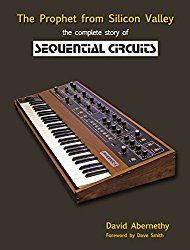
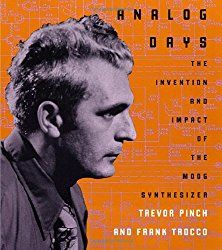
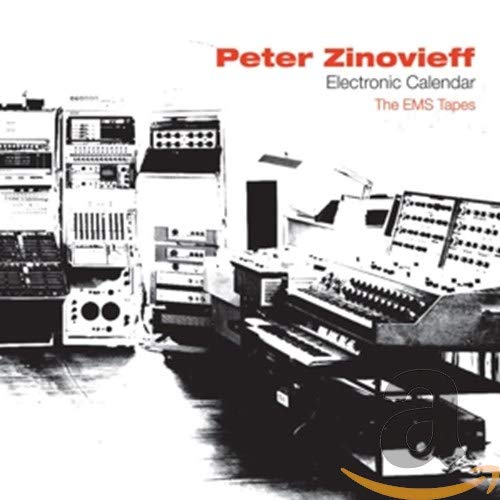
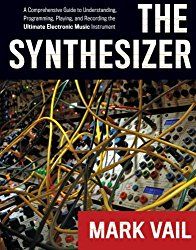
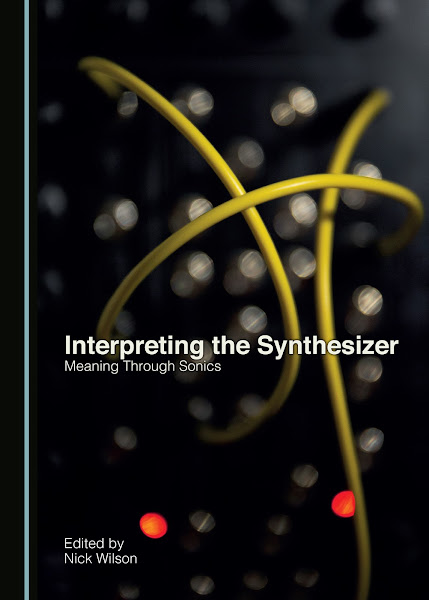
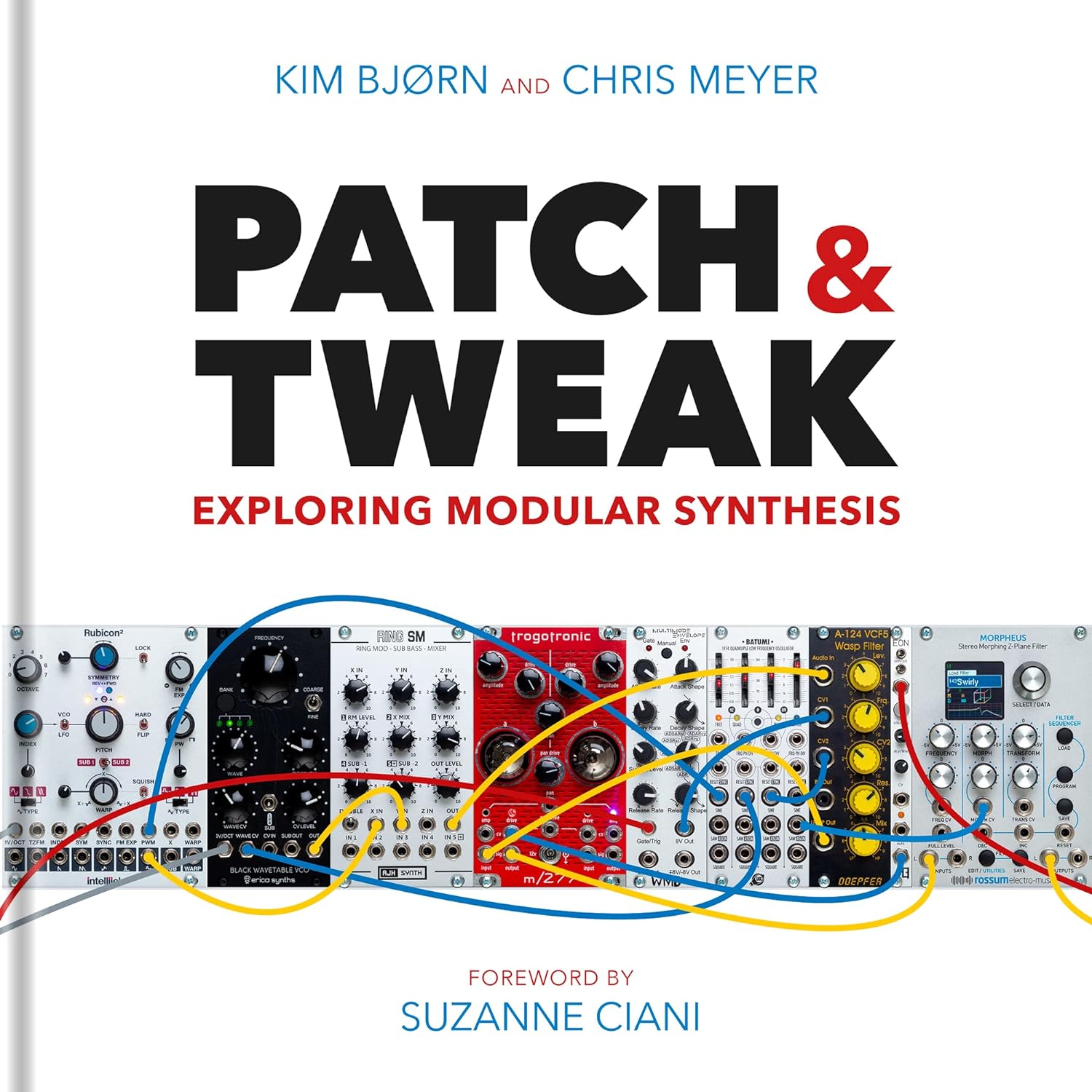
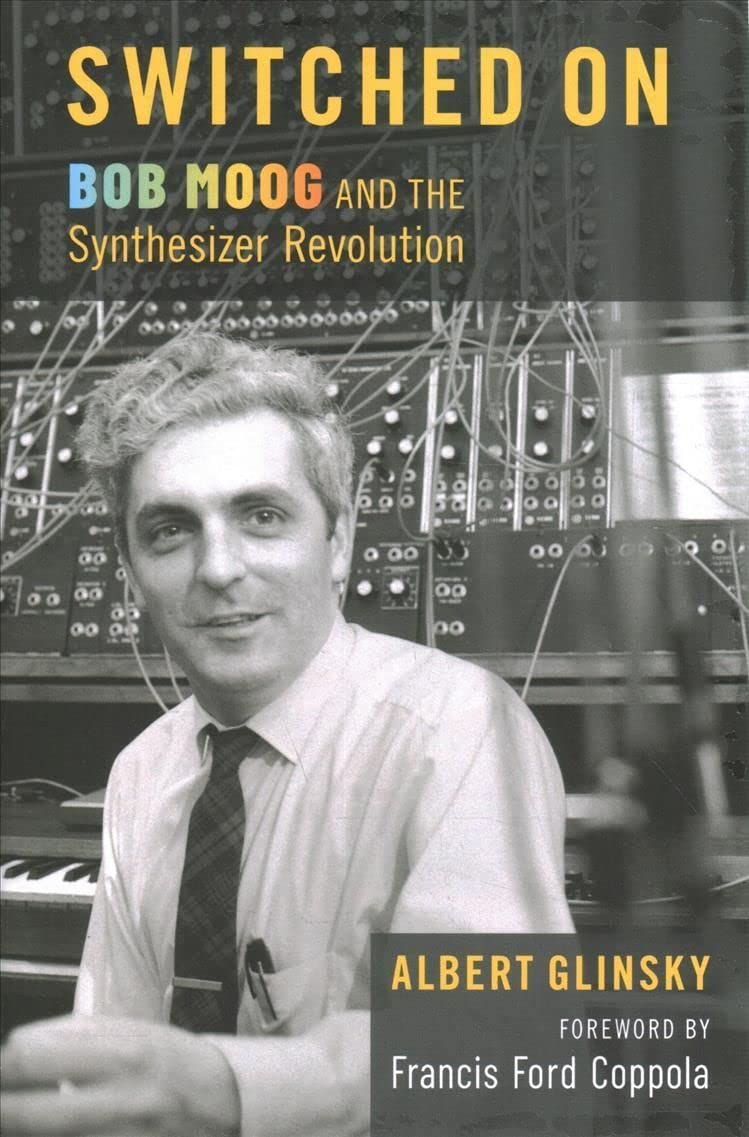
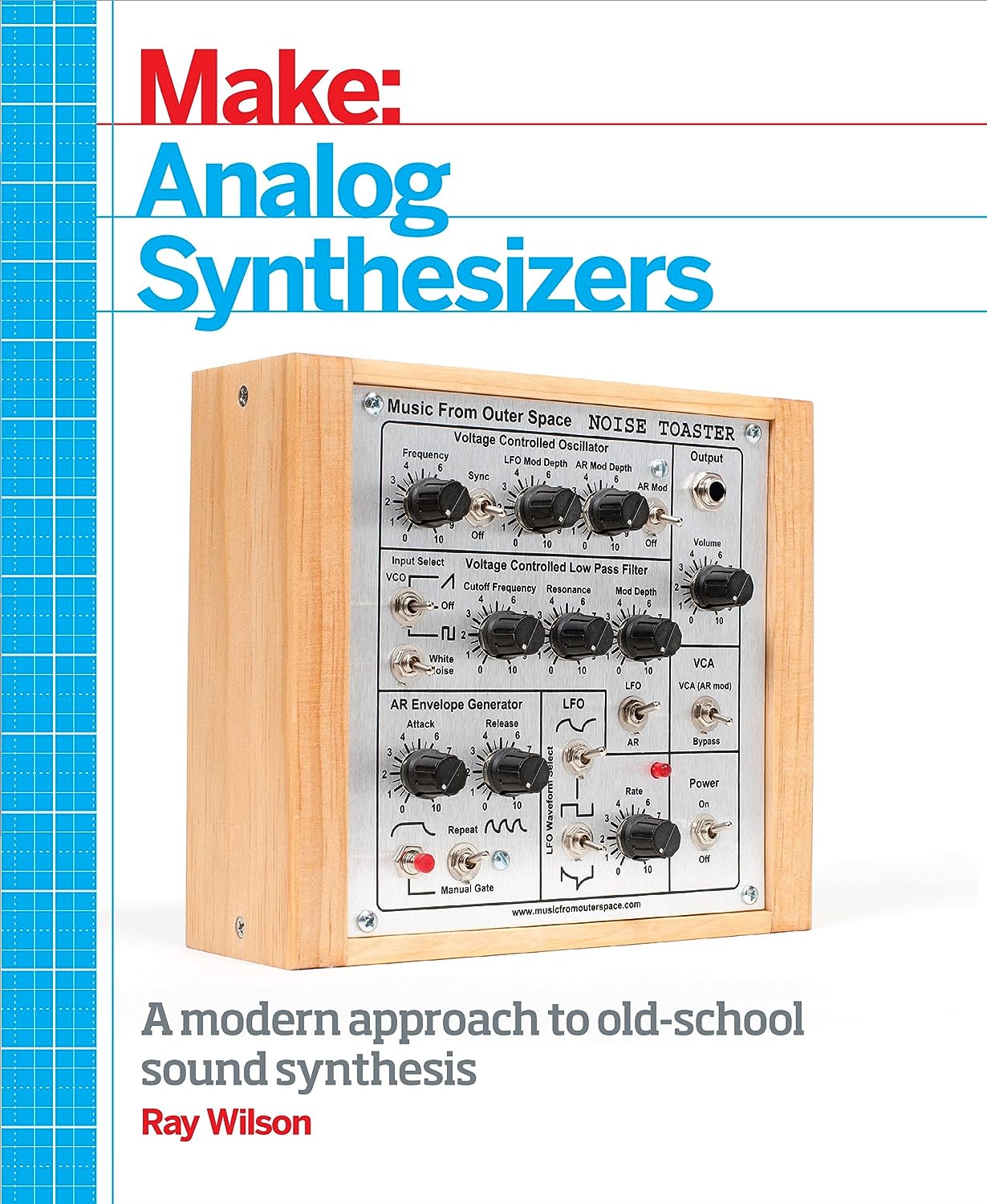
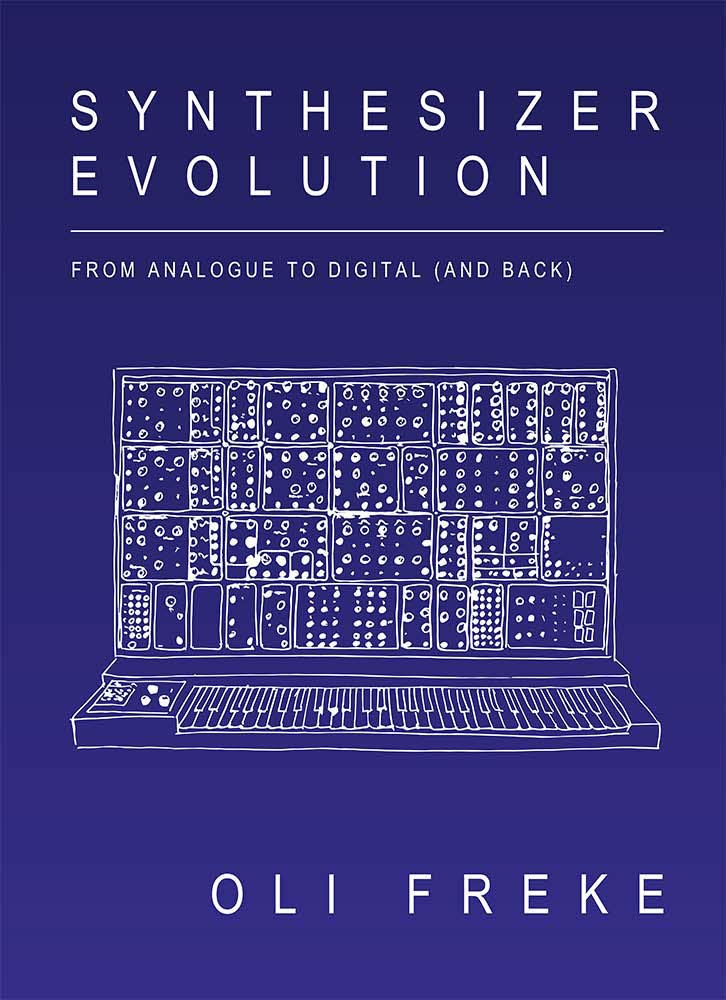
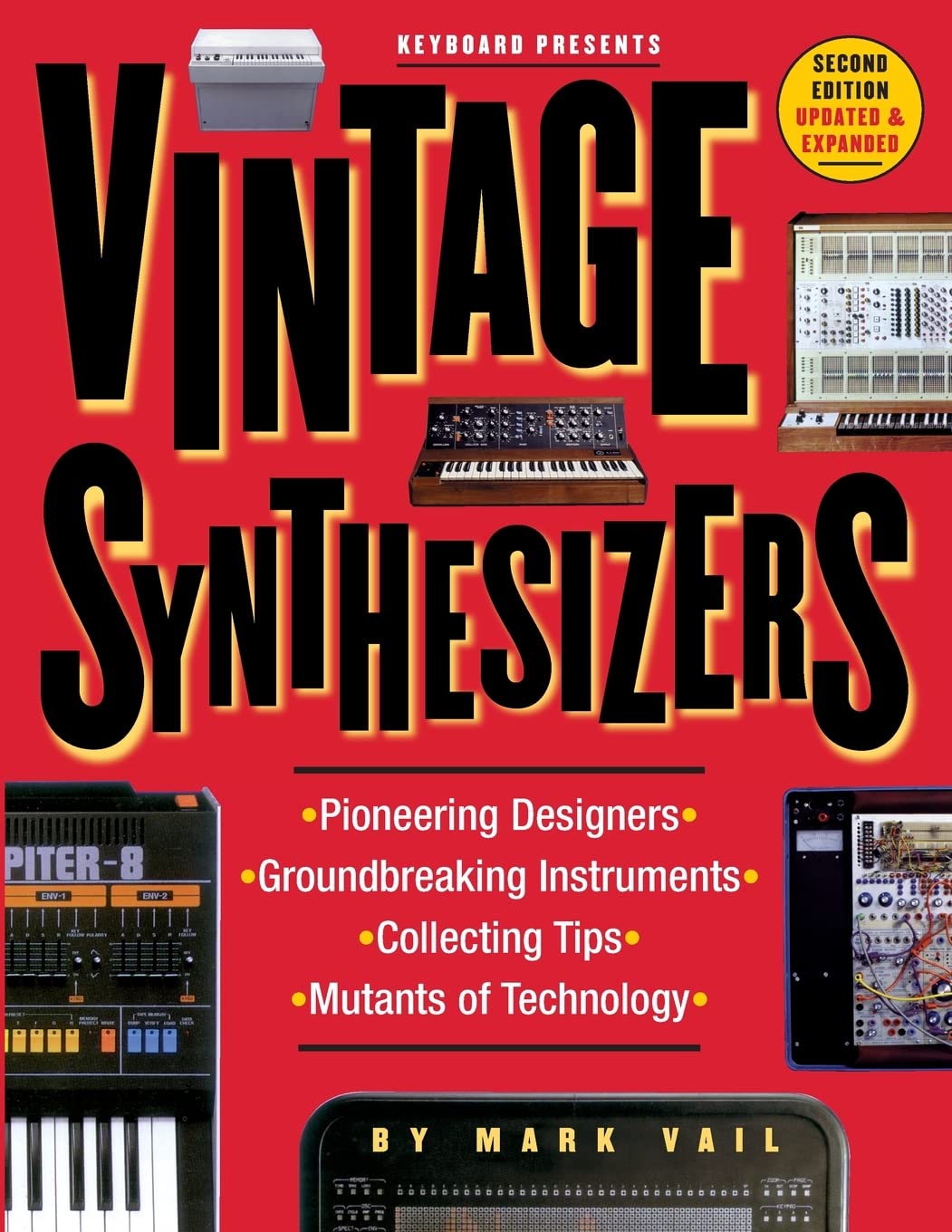
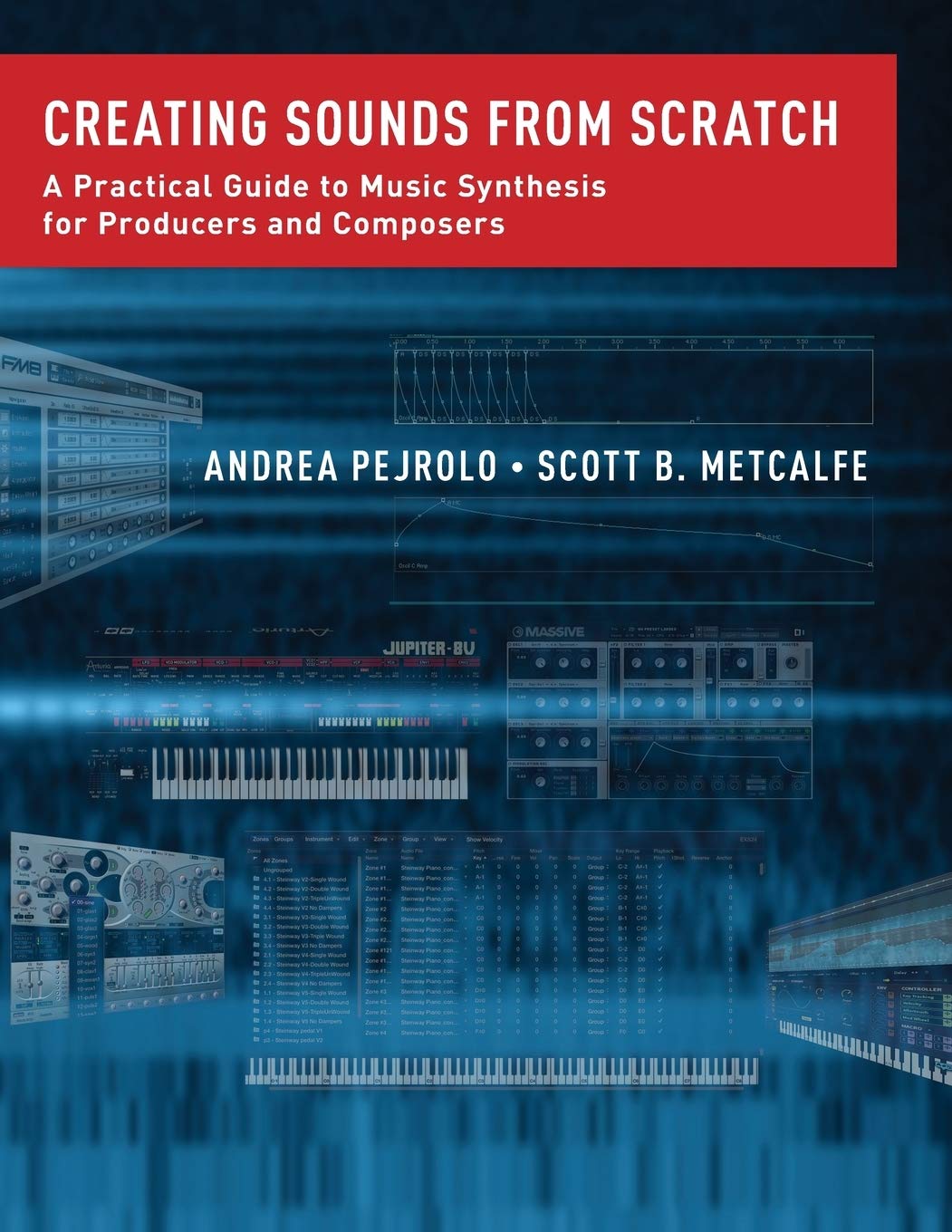
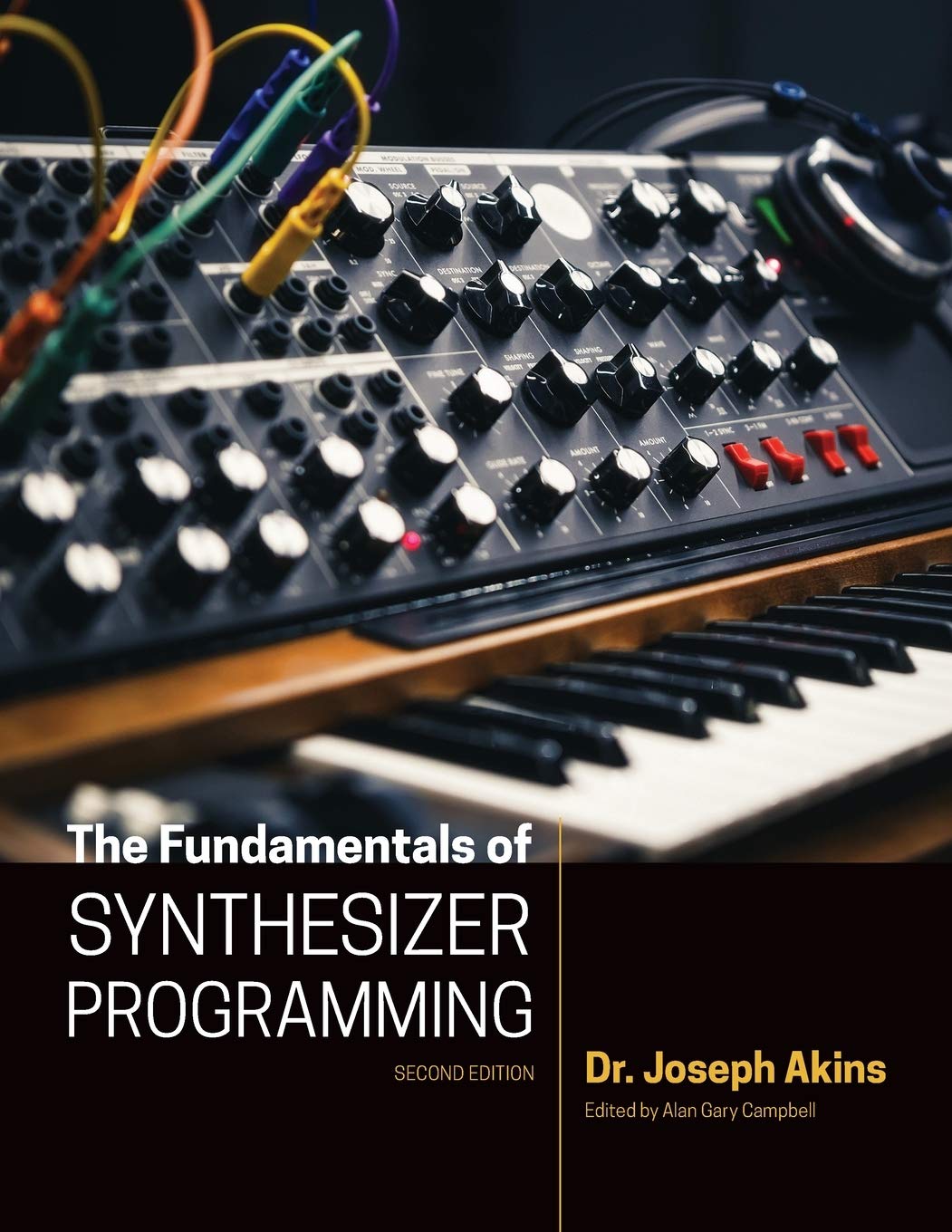

© Matrixsynth - All posts are presented here for informative, historical and educative purposes as applicable within fair use.
MATRIXSYNTH is supported by affiliate links that use cookies to track clickthroughs and sales. See the privacy policy for details.
MATRIXSYNTH - EVERYTHING SYNTH













© Matrixsynth - All posts are presented here for informative, historical and educative purposes as applicable within fair use.
MATRIXSYNTH is supported by affiliate links that use cookies to track clickthroughs and sales. See the privacy policy for details.
MATRIXSYNTH - EVERYTHING SYNTH
























